Teranesia Read online
Page 3
‘I think the Javanese empire is coming to an end. And like the Dutch, and the Portuguese, and the British, they’re finally going to have to learn to live within their own borders. But it won’t come easily. There’s too much at stake: oil, fisheries, timber. Even if the government was willing to walk away from the more troublesome provinces, there are people making vast amounts of money from concessions that date back to the Suharto era. And that includes a lot of generals.’
‘Do you think there’ll be a war?’ Even as he spoke the word, Prabir felt his stomach turn icy, the way it did when he saw a python on a branch in front of him. Not out of any real fear for his own safety, but out of a horror at all the unseen deaths the creature’s mere existence implied.
His father said cautiously, ‘I think there’ll be changes. And they won’t come easily.’
Suddenly he scooped Prabir into his arms, then lifted him up, right over his head. ‘Oh, you’re too heavy!’ he groaned. ‘You’re going to crush me!’ He wasn’t entirely joking; Prabir could feel his arms trembling from the strain. But he backed out of the hut smoothly, crouching down to fit the two of them through the doorway, then spun around slowly as he carried Prabir laughing across the kampung, under the palm leaves and the wakening stars.
2
Prabir had stolen his father’s life, but it was his father’s fault, at least in part. And since no one had been deprived of the original, it wasn’t really an act of theft. More a matter of cloning.
When Prabir had begged permission to start using their satellite link to the net for more than schoolwork, his father had made him promise never to reveal his true age to even the most innocuous stranger. ‘There are people whose first thought upon meeting a child is to wish for things that should only happen between adults,’ he’d explained ominously. Prabir had decoded this euphemism immediately, though he still had trouble imagining what harm anyone could do to him from a distance of several thousand kilometres. He’d been tempted to retort that if he pretended to be an adult there’d be even more people who’d want to treat him like one, but he’d had a sudden intuition that this was not a subject on which his father would tolerate smart-arsed replies. In any case, he was perfectly happy to conceal his age; he didn’t want to be talked down to.
On his ninth birthday, when access was granted, Prabir joined discussion groups on mathematics, Indonesian history, and Madagascan music. He read or listened to other people’s contributions carefully before making his own, and no one seemed to find his remarks particularly childish. Some people signed their posts with photographs of themselves, some didn’t; his failure to do so gave nothing away. The groups were tightly focused on their chosen topics, and no one would have dreamt of straying into personal territory. The subject of his age, or what he did for a living, simply never came up.
It was only when he began exchanging messages directly with Eleanor, an academic historian living in New York City, that Prabir found himself painted into a corner. After two brief notes on the Majapahit Empire, Eleanor began telling him about her family, her graduate students, her tropical fish. She soon switched from plain text to video, and began sending Prabir miniature home movies and guided tours of Manhattan. This could all have been faked, but not easily, and it probably would have been enough to convince his father that Eleanor was an honest and entirely benign correspondent to whom Prabir could safely confess his true age. But it was already too late. Prabir had responded to Eleanor’s first, written description of her family with an account of his journey from Calcutta to an unnamed island in the Banda Sea – accompanied by his wife and young son – for the purpose of studying butterflies. This exotic story had delighted her, and triggered a barrage of questions. Prabir had felt unable to refuse her answers, and he hadn’t trusted himself to fabricate an entire adult biography, consistent with the things he’d already told her, out of thin air. So he’d kept on cannibalising his father’s life, until it became unthinkable to confess what he’d done either to Eleanor, or to his father.
Rajendra Suresh had been abandoned on the streets of Calcutta when he was six years old. He’d refused to tell Prabir what he remembered of his earlier life, so Prabir declared to Eleanor that his past was veiled by amnesia. ‘I could be the son of a prostitute, or the lost scion of one of the city’s wealthiest families.’
‘Wouldn’t wealthy parents have gone looking for you?’ Eleanor had wondered. Prabir had hinted at revelatory dreams of scheming evil uncles and fake kidnappings gone wrong.
Rajendra had survived as a beggar for almost five years when he first encountered the Indian Rationalists Association. (Outside the family – Prabir had had this drummed into him from an early age – the organisation was never to be referred to by its initials, unless they were swiftly followed by some suitable clarifying remark.) They couldn’t grant him the protection of an orphanage – their resources were stretched too thin – but they’d offered him two free meals a day, and a seat in one of their classrooms. This had been enough to keep him from starvation, and to save him from the clutches of the Mad Albanian, whose servants prowled the city hunting down children and lepers. Prabir had had nightmares about the Mad Albanian – far too disturbing to share with Eleanor – in which a stooped, wrinkled creature pursued him down alleys and into open sewers, trying to wash his feet with a cloth drenched in lamb’s blood.
The IRA’s avowed purpose was to rid the country of its mind-addling legacy of superstition, along with the barriers of caste and gender that the same gibberish helped prop up. Even before they’d begun their social programmes – feeding and educating street children, teaching women business skills and self-defence – the Calcutta Rationalists had taken on the gurus and the God-men, the mystical healers and miracle workers who plagued the city, and exposed them as frauds. At the age of twelve, Rajendra had witnessed one of the movement’s founders, Prabir Ghosh, challenge a local holy man who made his living curing snake bites to save the life of a dog who’d been thrust into a cage with a cobra. In front of an audience of a thousand enthusiastic believers, the holy man had waved his hands over the poor convulsing animal for fifteen minutes, muttering ever more desperate prayers and incantations, before finally confessing that he had no magical powers at all, and that anyone bitten by a snake should seek help from the nearest hospital without delay.
Rajendra was impressed by the man’s honesty, however belated; some charlatans kept bluffing and blustering long after they’d lost all credibility. But the power of the demonstration impressed him even more. It was common knowledge that many snakes were not poisonous, and that a shallow enough bite or a strong enough constitution could enable some people to survive an encounter with a truly venomous species. The holy man’s reputation must have flourished on the basis that he’d ‘cured’ people who would have survived anyway – each success a joyous miracle worth trumpeting loudly, to be retold with embellishments a hundred times, as opposed to each sad and unsurprising death. But this simple trial had cleared away all the confounding issues: the snake was poisonous, the bites were deep and numerous … and the victim had died in front of a thousand witnesses.
In the minute’s silence for the dog that followed, Rajendra had chosen his vocation. Life and death were mysteries to him, but no mystery was impenetrable. The earliest attempts to understand these things, he reasoned, must have foundered against obstacles that seemed insurmountable, leaving behind failed systems of knowledge to ossify or degenerate. That was the source of religion. But someone, somewhere had always carried on the search in good faith; someone had always found the strength to keep on asking: Are the things I believe true? That was the legacy he’d claim. Hindus, Muslims, Buddhists, Sikhs, Jains, Parsees and Christians, from the most sincere self-deluding mystics to the most cynical frauds, could never do more than parody the search for truth. He would put the truth above every faith, and hunt down the secrets of life and death.
He would become a biologist.
Four years later, Rajendra was working
as a book-keeper in a warehouse, studying in the evenings and helping out at the IRA school on Sundays, when Radha Desai took over the women’s self-defence class. Each week he’d see her arriving, dressed in a plain white karate uniform, chauffeured by a man in his early thirties who was clearly not a servant. It took Rajendra a month to discover that she was neither married nor engaged; the chauffeur was her elder brother, and the only reason she wasn’t driving herself was fear of the car being vandalised.
Prabir had trouble keeping a straight face when he described his parents’ courtship, but he knew it was the kind of thing Eleanor would want to hear about, even if he was short of authentic details and had to improvise. In Prabir’s version, Rajendra would synchronise the chants of his class of beggars reciting their multiplication tables with the shouts of Radha from the courtyard as she counted out push-ups and sit-ups, allowing him to hang on her every word without neglecting his students. And then just before lunch time she’d walk right past his classroom window, and he’d stare at the floor, or feign a migraine and cover his eyes, lest their gazes meet accidentally and his face betray everything to the worldly children.
Prabir’s mother described her parents as ‘upper-middle-class pseudo-socialist hypocrites’. For their daughter to teach karate to Scheduled Caste women and brush shoulders with infamous atheists could be considered progressive and daring. To say that she’d married a book-keeper three years younger than herself who’d fought his way up to live in the slums wouldn’t have had quite the same value as a throw-away line at parties. His father was milder, merely saying that ‘Given their background, what could you expect?’
Radha was studying genetics at the University of Calcutta. They’d meet secretly in parks and cafés early in the morning, before Rajendra started work – long before Radha’s first lecture, but she always had the excuse of karate training. Rajendra was still struggling with high-school biology, but Radha tutored him, and they set their sights on a distant goal: they’d work together as researchers. Somewhere, somehow. Prabir was confident that it had been love at first sight – though neither of them had ever said as much – but it was biology that kept them together, in more than the usual way. Prabir snorted with laughter as he described clandestine meetings on park benches, hands fumbling with the pages of textbooks, recitations of the phases in the life cycle of a cell. But for all that it amused and embarrassed him, and nagged at his conscience now and then, he never really felt like a thief and a traitor as he gave away secrets that weren’t his to give. Though all of this was supposedly for Eleanor’s benefit, imagining his parents’ lives became, for Prabir, something akin to staring into Madhusree’s eyes and trying to make sense of what he saw. In this case, though, he had no memories to guide him, just books and films, instinct and guesswork, and his parents’ own guarded confessions.
Rajendra won a scholarship to attend the university. With so many more opportunities to be together, they became less discreet. Their affair was discovered, and Radha left home, severing all ties with her family. She was still not qualified for an academic job, but she was able to support herself as a lab assistant. Four men ambushed Rajendra on the campus one night and put him in hospital; there was never any proof of who sent them. When he’d recovered, Radha tried to teach him to defend himself, but Rajendra turned out to be her worst student ever, strong but intractably clumsy, possibly as a result of early malnutrition.
Lest Eleanor think less of his father for this – the whole question of exactly whose honour was at stake was somewhat blurred in Prabir’s mind by now – he sent her a picture of Rajendra in an IRA parade, dragging a truck through the centre of Calcutta with a rope attached to his body by two metal hooks through the skin of his back. Not quite single-handed; a friend marched beside him, sharing the load. The visible tension in the ropes and the pyramids of skin raised by the hooks made it look as if both men were on the verge of being flayed alive, but they were smiling. (Smiling over gritted teeth, but anyone pushing a truck through the heat of Calcutta would have clenched their jaws as much from sheer exertion.)
A similar feat was performed as part of certain religious festivals, in which devotees would whip themselves into a frenzy of body piercing, hot-coal walking, and other supposedly miraculous acts of potential self-harm – protected by purification rituals, the blessing of a holy man, and the intensity of their faith. But Rajendra and his fellow human bullock had received no blessing from anyone, and loudly professed their complete lack of faith in everything but the toughness and elasticity of ordinary human skin. Positioned correctly, the hooks drew little blood, and a thick fold of skin could take the load easily, even if the tugging sensation was disturbing to the uninitiated. There was no need for ‘trance states’ or ‘self-hypnosis’ – let alone supernatural intervention – to block out the pain or stop the bleeding, and the greatest risk of actual harm could be eliminated by carefully sterilising the hooks. It still required considerable courage to participate in such a gruesome-looking act, but knowing the relevant anatomical facts was as good an antidote to fear as any amount of religious hysteria.
Prabir spared Eleanor the picture of his mother with cheeks and tongue skewered, though like the hooks it was safe and painless enough if you knew how to avoid the larger nerves and blood vessels. The sight of his mother performing this exacting feat made Prabir intensely proud, but it also induced more complicated feelings. You couldn’t tell from the picture, and she hadn’t known it at the time, but on the day of the parade she was already carrying him. It added a certain something to his cosy images of amniotic bliss to see steel spikes embedded in the same sheltering flesh.
Rajendra had learnt of the butterfly as he was completing his doctorate in entomology. A Swedish collector, in the country on a buying expedition, had come to the university seeking help in identifying a mounted specimen he’d bought in the markets; he’d been handed down the academic ranks until he’d reached Rajendra. The butterfly – a female, twenty centimetres across, with black and iridescent-green wings – clearly belonged to some species of swallowtail: the two hind wings were tipped with long, narrow ‘tails’ or ‘streamers’. But there were puzzling quirks in certain anatomical features, less obvious to the casual observer but of great taxonomic significance: the pattern of veins in the wings, and the position of the genital openings for insemination and oviposition. After a morning spent searching the handbooks, Rajendra had been unable to make a positive identification. He told the collector that the specimen was probably a mildly deformed individual, rather than a member of an unknown species. He could think of no better explanation, and he had no time to pursue the matter further.
A few weeks later – having successfully defended his doctoral thesis – Rajendra sought out the dealer who’d sold the specimen to the Swedish collector. After chatting for a while, the dealer produced another, identical butterfly. No fewer than six had arrived the month before, from a regular supplier in Indonesia. ‘Where, exactly, in Indonesia?’ Ambon, provincial capital of the Moluccas. Rajendra negotiated the price down to something affordable and took the second butterfly to the lab.
Dissection revealed more anomalies. Whole organs were displaced from their usual positions, and features conserved across the entire order Lepidoptera were missing, or subtly altered. If all of these changes were due to a barrage of random mutations, it was hard to imagine how the creature could have survived the larval stage, let alone ended up as such a beautifully formed, perfectly functioning adult. You could expose generations of insects to teratogens until half of them grew heads at both ends of their bodies, but nothing short of a few million years of separate evolution could have produced so many perfectly harmless – or, for all Rajendra knew, beneficial – alterations. But how could this one species of swallowtail have been isolated longer than any other butterfly in the world?
Radha carried out genetic tests. Attempts to determine the butterfly’s evolutionary genealogy with standard markers yielded nonsensical results – but old, d
egraded DNA couldn’t be trusted. Rajendra begged the dealer to try to obtain a living specimen, but nothing doing, that was too much trouble. However, he did reluctantly reveal the name of his supplier in Ambon. Rajendra wrote to the man, three times, to no avail.
By 2006, the couple had scraped together enough money for Rajendra to travel to Ambon in person, and he’d taught himself enough Bahasa Indonesian to speak to the supplier without an interpreter. No, the supplier couldn’t get him live specimens, or even more dead ones. The butterflies had been collected by shipwrecked fishermen, killing time waiting to be rescued. No one visited the island in question intentionally – there was no reason to – and the supplier couldn’t even point it out on a map.
‘Fishermen from where?’
‘Kai Besar.’
Rajendra phoned Radha. ‘Sell all my textbooks and wire me the money.’
With the help of the bemused fishermen, Rajendra collected dozens of pupae from the island; he had no idea what the chrysalis stage would look like, so he grabbed a few examples of every variation he could find. Back in Calcutta, fifteen of the pupae completed metamorphosis, and three yielded the mysterious swallowtail.
Fresh DNA only confirmed the old puzzles, and added new ones. Structural differences in the genes for neotenin and ecdysone, two crucial developmental hormones, suggested that the butterfly’s ancestors had parted company from other insects three hundred million years ago – roughly forty million years before the emergence of Lepidoptera. This conclusion was obvious nonsense, and other genes told a far more believable story, but the discrepancy itself was remarkable.
Radha and Rajendra co-authored a paper describing their discoveries, but every journal to which they submitted it declined publication. Their observations were absurd, and they could offer no explanation for them. Most of their peers reviewing the work for the journals must have decided that they were simply incompetent.

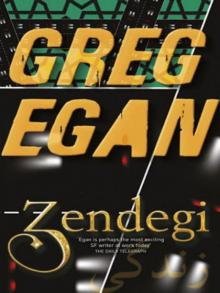 Zendegi
Zendegi Permutation City
Permutation City The Eternal Flame
The Eternal Flame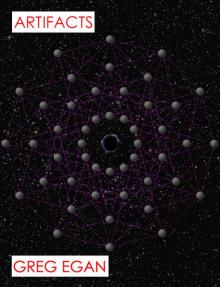 Artifacts
Artifacts Wang's Carpets
Wang's Carpets Dichronauts
Dichronauts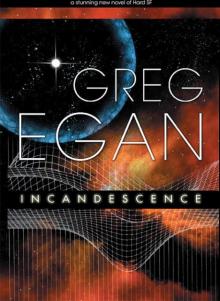 Incandescence
Incandescence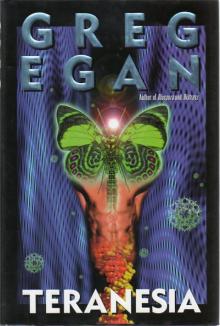 Teranesia
Teranesia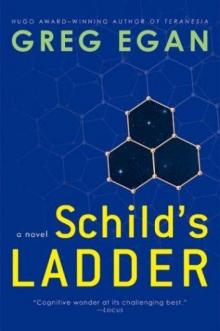 Schild's Ladder
Schild's Ladder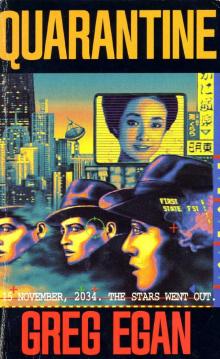 Quarantine
Quarantine The Four Thousand, the Eight Hundred
The Four Thousand, the Eight Hundred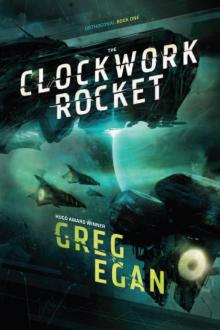 The Clockwork Rocket
The Clockwork Rocket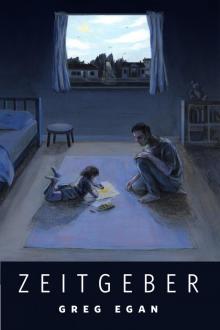 Zeitgeber
Zeitgeber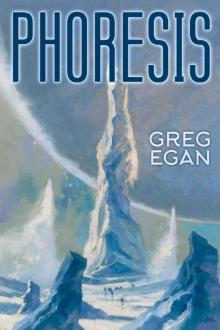 Phoresis
Phoresis The Nearest
The Nearest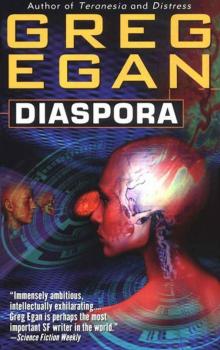 Diaspora
Diaspora Instantiation
Instantiation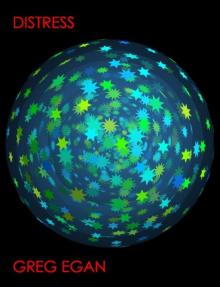 Distress
Distress An Unusual Angle
An Unusual Angle Oceanic
Oceanic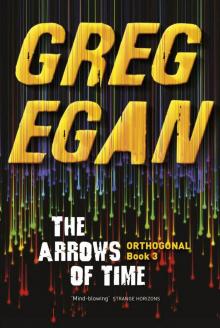 The Arrows of Time
The Arrows of Time Axiomatic
Axiomatic![Anthology 2. Luminous [1998, 2010] Read online](http://i1.bookreadfree.com/i/03/18/anthology_2_luminous_1998_2010_preview.jpg) Anthology 2. Luminous [1998, 2010]
Anthology 2. Luminous [1998, 2010]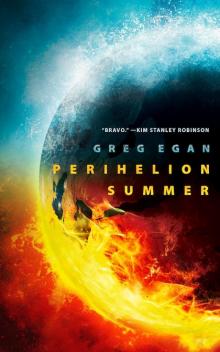 Perihelion Summer
Perihelion Summer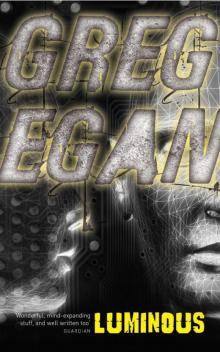 Luminous
Luminous